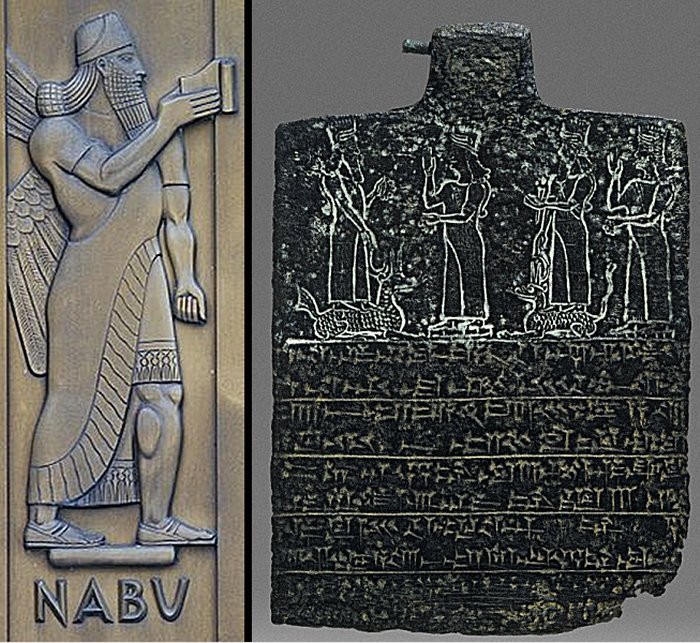Mesopotamian God Nabu Inscribed The Human Fates Determined By The Gods
A. Sutherland - AncientPages.com - Nabu was among the most prestigious Babylonian-Assyrian gods, but he earned his importance much later in the first millennium BC.
At a time, he was identified as the son of the god Marduk, the son of Enki, and the patron god of the city of Babylon.
With his consort, Tashmet ( “the lady who listens”), god Nabu shared a temple in the city of Borsippa, in which they were patron deities. Credit: Public Domain
Much earlier in the Sumerian pantheon, Nabu was known as a female deity Nisaba, patron of writing, learning, and harvest. Later as the Mesopotamian god of wisdom, patron god of literacy, scribes, knowledge, and the gods' messenger, Nabu became widely known, respected, and worshiped.
The Babylonian works included the ritual phrase "Praise be to Nabu!"
God Nabu ('A Prophet') Is Related To Ebla
His name 'Nabu' is related to the archaic Ugaritic 'Nbu,' which means a prophet, a seer, a reader of oracles. Additionally, from his name Nabu also derived the words: Nebo (in Proto-Aramic) and Nabi (in Arabic and Persian), and both have the same meaning: a prophet.
A historical look at god Nabu's life shows that he was originally a Syrian god included in the list of the gods of Ebla. This mysterious ancient city existed thousand years before the biblical time of Kings David and Solomon.
The myths of Mesopotamia mention that Nabu engraves the fate of people and the world on the 'Tablet of Destiny' that was later stolen by the evil bird god Anzu. Ancient sources indicate that before Nabu entered the Assyrian pantheon, he was known as the scribe and vizier of Marduk, who recorded all the decisions of the gods regarding humans.
Around the second millennium BC, the contemporary scribes of Ugarit and the Amorites from Syria brought Nabu's cult to Mesopotamia.
The Concept Of Fate In The Ancient World
Nabu was said to be the keeper of the tablet of fate regarding the ancient Babylonians and Assyrians. In the ancient world, many people believed in fate. Our ancestors thought that different deities predetermined their lives. Even though people had free will and thought they changed events, the outcome was always the same.
Free only allowed people to make decisions that led to their predetermined fate. For example, in Norse mythology, the Norns were goddesses who decided the fates of people and determined individuals' destinies and lifespans. Ancient Greeks have myths about the Graeae, three sisters of fate who shared one eye and one tooth.
Left: Lee Lawrie, Nabu (1939). Library of Congress John Adams Building, Washington, D.C.; Right: The figures of four deities, including Marduk, holding a necklace and standing on a dragon, and Nabu, holding a stylus, are incised above the inscription, a dedication to Nabu. Image credit: British Museum
As mentioned in another article on Ancient Pages, one can compare the Graeae with the three spinners of Destiny, the Moirai, also called the Fates, in Greek mythology. The three Moirai determined the span of human life of every mortal from birth to death. They were so powerful that no god had the right or the means to alter their decisions.
Although the Fates were the personifications of destiny, no human could blame the fates since there were times he was the only one responsible for his failures. The belief that a person could not escape certain events was widespread.
Place Of Residence And Cult Center Of Nabu
Nabu resided in his temple E-zida in the vicinity of Borsippa (Babylon's lesser sister city), considered by modern scholars as a religious edifice in honor of this god. Each New Year, his statue was moved to Babylon so Nabu could pay his profound respect to his father.
During the celebrations (the Akitu Festival) that lasted for twelve days and were closely related to the god Marduk, Nabu also played an important role.
His popularity increased primarily during the Old Babylonian Period (2000-1600 BC) during the reign of King Hammurabi (1792-1750 BC).
Nabu's symbol was a stylus resting on a tablet, and he was usually depicted wearing a horned cap, and his hands clasping hands expressed the ancient gesture of priesthood. He rode on a winged dragon known as Sirrush that initially belonged to his father, Marduk.
At his temple E-zida, clay tablets decorated with calligraphic skills were used as offerings. He was the husband of the Akkadian goddess Tashmet (reason), who was also considered a deity of wisdom.
Due to his role as an oracle, Nabu was associated with the Mesopotamian moon god Sin in the Mesopotamian beliefs of Akkad, Assyria, and Babylonia. Astrologists of Babylonia associated Nabu with the planet, Mercury.
Nabu's Worship Was Long-Lasting And Spread To Egypt
Nabu remained continuously venerated until the 2nd century, within the boundaries of Mesopotamia and his cult even spread to ancient Egypt, where the Egyptians linked Nabu with Thoth. On the Island of Elephantine, at the southern border of Upper Egypt with Lower Nubia, Nabu was honored as one of five non-Egyptian deities.
Between the death of Alexander the Great in 323 BC and the emergence of the Roman Empire, Nabu was often compared to the Greek god Apollo.
Written by – A. Sutherland - AncientPages.com Senior Staff Writer
Updated on November 25, 2022
Copyright © AncientPages.com All rights reserved. This material may not be published, broadcast, rewritten or redistributed in whole or part without the express written permission of AncientPages.com
Expand for referencesDelaporte L. Mesopotamia
Nardo D. Ancient Mesopotamia
More From Ancient Pages
-
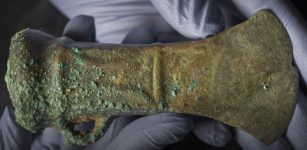 Mysterious Havering Hoard – Largest Ever Bronze Age Hoard Discovered In London
Archaeology | Oct 21, 2019
Mysterious Havering Hoard – Largest Ever Bronze Age Hoard Discovered In London
Archaeology | Oct 21, 2019 -
 Amanitore – Nubian Warrior Queen And Her Pyramids
Historical Figures | Aug 13, 2018
Amanitore – Nubian Warrior Queen And Her Pyramids
Historical Figures | Aug 13, 2018 -
 Karahunge – ‘Speaking Stones’ With Secrets – Remarkable Prehistoric Structures Of Armenia
Places | Jun 4, 2020
Karahunge – ‘Speaking Stones’ With Secrets – Remarkable Prehistoric Structures Of Armenia
Places | Jun 4, 2020 -
 Ancient People Handled Sun Exposure Better Than Modern People – An Anthropologist Explains Why
Featured Stories | Sep 21, 2022
Ancient People Handled Sun Exposure Better Than Modern People – An Anthropologist Explains Why
Featured Stories | Sep 21, 2022 -
 Unknown Prehistoric Henge Site Detected Near Famous Newgrange In Ireland’s East Coast
Archaeology | Jul 13, 2018
Unknown Prehistoric Henge Site Detected Near Famous Newgrange In Ireland’s East Coast
Archaeology | Jul 13, 2018 -
 Perperikon – Ancient Secrets Of Bulgaria’s ‘Machu Picchu’ And Europe’s Largest Megalithic Sanctuary
Featured Stories | May 3, 2017
Perperikon – Ancient Secrets Of Bulgaria’s ‘Machu Picchu’ And Europe’s Largest Megalithic Sanctuary
Featured Stories | May 3, 2017 -
 Ancient DNA Reveals Easter Island’s Population Collapse Never Occurred
DNA | Sep 16, 2024
Ancient DNA Reveals Easter Island’s Population Collapse Never Occurred
DNA | Sep 16, 2024 -
 Bacho Kiro Cave: Early Homo Sapiens Groups In Europe Faced Subarctic Climates
Archaeology | Sep 24, 2021
Bacho Kiro Cave: Early Homo Sapiens Groups In Europe Faced Subarctic Climates
Archaeology | Sep 24, 2021 -
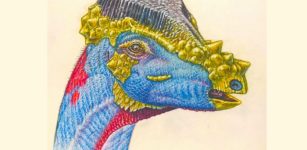 Newly Described Species Of Dome-Headed Dinosaur May Have Sported Bristly Headgear
News | May 24, 2023
Newly Described Species Of Dome-Headed Dinosaur May Have Sported Bristly Headgear
News | May 24, 2023 -
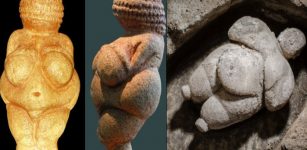 ‘Venus of Willendorf’: New Theory On ‘Venus’ Figurines – Proposed
Artifacts | Dec 1, 2020
‘Venus of Willendorf’: New Theory On ‘Venus’ Figurines – Proposed
Artifacts | Dec 1, 2020 -
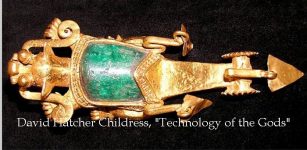 Prehistoric Heavy Machinery Of The Ancient Times Or A Piece Of Jewelry?
Ancient Technology | Sep 12, 2018
Prehistoric Heavy Machinery Of The Ancient Times Or A Piece Of Jewelry?
Ancient Technology | Sep 12, 2018 -
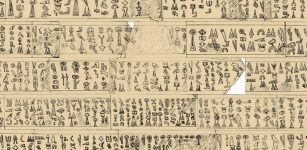 Invasion Of Mysterious Sea People – Enigmatic 3,200-Year-Old Luwian Hieroglyphic Inscription Sheds New Light On Ancient Puzzle
Archaeology | Oct 11, 2017
Invasion Of Mysterious Sea People – Enigmatic 3,200-Year-Old Luwian Hieroglyphic Inscription Sheds New Light On Ancient Puzzle
Archaeology | Oct 11, 2017 -
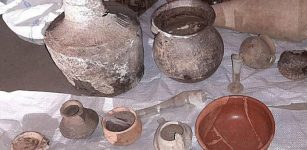 Europol Reports: ‘Millions’ In Stolen Treasures After Busting Crime Gang In Bulgaria – Recovered
Archaeology | Jul 4, 2020
Europol Reports: ‘Millions’ In Stolen Treasures After Busting Crime Gang In Bulgaria – Recovered
Archaeology | Jul 4, 2020 -
 Antediluvian Artifact Discovered In Egyptian Tomb May Solve The Great Pyramid Mystery?
Ancient Mysteries | May 3, 2018
Antediluvian Artifact Discovered In Egyptian Tomb May Solve The Great Pyramid Mystery?
Ancient Mysteries | May 3, 2018 -
 Harappan Civilization Built Massive Protection Walls Against Tsunami 5,000 Years Ago
Archaeology | Jan 10, 2017
Harappan Civilization Built Massive Protection Walls Against Tsunami 5,000 Years Ago
Archaeology | Jan 10, 2017 -
 Perplexing Accounts Of Ancient People Who Demonstrated Incredible Powers Of The Human Mind
Featured Stories | Feb 1, 2019
Perplexing Accounts Of Ancient People Who Demonstrated Incredible Powers Of The Human Mind
Featured Stories | Feb 1, 2019 -
 Strange Mist, Unexplained Vanishings And Other Bizarre Incidents – What Is The Connection?
Featured Stories | Mar 8, 2019
Strange Mist, Unexplained Vanishings And Other Bizarre Incidents – What Is The Connection?
Featured Stories | Mar 8, 2019 -
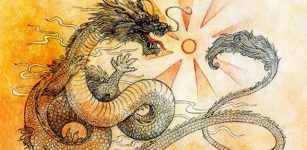 The Hidden History of China’s Secret Societies
Featured Stories | Nov 23, 2014
The Hidden History of China’s Secret Societies
Featured Stories | Nov 23, 2014 -
 Unexplained Mystery Of The Untraceable Stone-Throwers – Strangeness In North America, Belgium And Indonesia – Part 1
Featured Stories | Nov 11, 2019
Unexplained Mystery Of The Untraceable Stone-Throwers – Strangeness In North America, Belgium And Indonesia – Part 1
Featured Stories | Nov 11, 2019 -
 “The Starving Of Saqqara Statue” And Its Undeciphered Inscription Could Pre-Date The Pyramids Of Egypt
Archaeology | Jun 2, 2014
“The Starving Of Saqqara Statue” And Its Undeciphered Inscription Could Pre-Date The Pyramids Of Egypt
Archaeology | Jun 2, 2014


